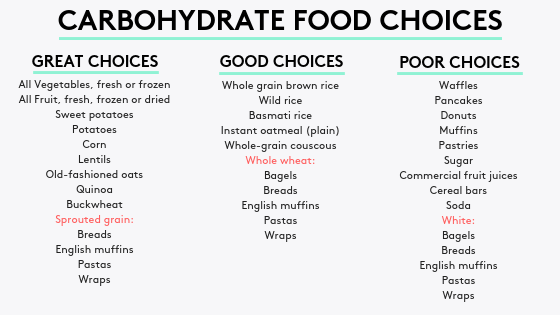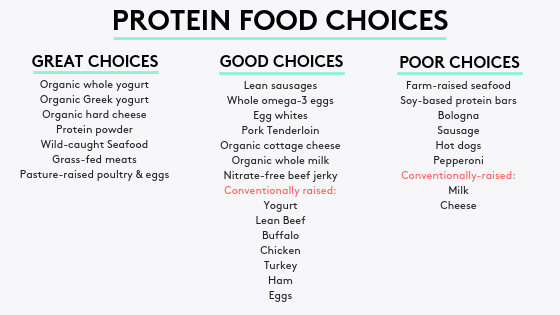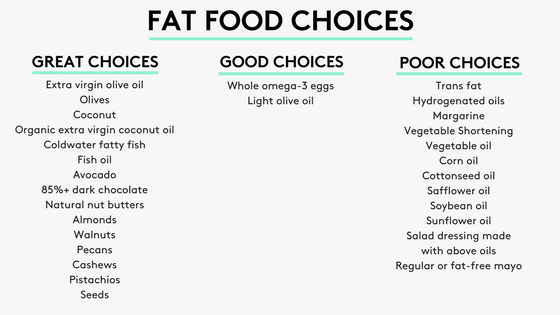Macros and Meal Plans Client Coaching Information Page
Bookmark this page to refer back to.
Please read this information carefully and ask questions.
Contents
1. Your Macro Options
- Eat the same macros / calories everyday.
Eating the same macros / calories everyday is self-explanatory.
- Cycling macros / calories on training and rest days.
Cycling macros / calories is where you eat more on training days and less on rest days.
The reason for this is it allows you to eat more when your muscles need more calories (training days) and eat less when your body needs less calories (rest days).
This can also help with diet adherence as it allows you to eat more on training days which can help you feel like you’re not restricting calories every single day.
But, no matter the method, we get to the same goal as the total amounts over the course of the week are the same (same macros everyday = macro cycling total intake).
So, it’s a personal preference.
Note 1: When Macro / Calorie cycling, training days are when you strength train. Cardio does not count as a training day.
Note 2: Keep in mind that when you input your macros in MyFitnessPal, it is based on percentages and not exact numbers like I’m giving you (if you’re using the free version). Play with the percentages to get close to the macro numbers I provided (they don’t have to be exact). Let me know if you have any trouble with this. Please use the targets that I’ve included for you.
Note 3: Mike’s Macros (my personal favorite tracking app ) is a great alternative to MyFitnessPal.
Note 4: You are tracking using macro-nutrients now, but practice awareness in terms of portion sizes as you track and weigh things. This will be helpful down the road as you become more familiar with what are appropriate portion sizes. Meaning you won’t have to track macros or weigh things forever, you’ll be able to do it by experience and feel.
2. How To Track Macros
If you’ve never tracked macros before or need a refresher, then my post Tracking Macros 101: The Complete Guide is required reading.
Also, using a digital food scale will make your life and tracking so much easier. I highly recommend you getting one.
You can buy a digital food scale locally at a Target / Wal-Mart / Department Store for $20 or less.
Or online. Click HERE for one I recommend.
Here’s a basic video on how to use a food scale…
3. Important Nutrition Points
Carbs (4 calories per gram)
- Eat vegetables with every meal to slow digestion.
- Vegetables are not optional, they are required. Sometimes cooking and eating enough veggies can be a pain in the ass. Consider getting yourself a silicone microwave steamer as it gets the job done quickly and painlessly like this one HERE or HERE.
- Don’t make the mistake of adding salad dressings and mayonnaise to vegetables but forgetting to count that.
What are some simple veggies to prepare and eat?
Here’s my personal list: Cucumbers, carrots, broccoli, peppers, kale, and spinach. Feel free to choose your own. If you stick to the same ones you’ll get quick at preparing them.
- Eat two pieces of fruit a day, for now.
- I don’t insist on fruit, but it’s a very good idea to include in your diet.
- Dried fruit: The water content and the bulk of the fiber is gone. Canned stuff often contains lots of added sugar. Highly calorie dense foods like this are not a good idea on a diet. Avoid them.
- Fruit Juice: Avoid due to similar reasons to those listed above. Eat whole fruit.
- Vegetables and fruits should be prioritized. Starchy carbs are the last thing to be added in.
- Generally speaking, the less refined the better. Simply put, choose things that your great-grandmother would recognize as food.
- Brown vs. White pasta/bread/rice comes down to your taste preference only, it doesn’t affect the result.
- In terms of satiety: Potatoes > Fruit/Bread/Rice/Pasta > Cereal > Sugary Cereal.
- If something has a nutritional information label on it, check and track the macros.
 Protein (4 calories per gram)
Protein (4 calories per gram)
Protein powder is going to be the cheapest way to hit your protein targets for the day.
However, that’s not a very tasty way to do things, nor is it very filling.
If you’re on a budget, feeling very full, traveling, or need to get some extra protein in at the end of the day, then protein powder can be very useful.
Otherwise, try to stick to food.
 Fat (9 calories per gram)
Fat (9 calories per gram)
- Fat can quickly add up in our diets due to it being very calorie dense.
- Fish oil: The fat from fish oil that you may choose to consume (see ‘supplements’ link) should be counted.
- I don’t want you to under-eat on fat as this can cause hormonal issues.

Alcohol (7 calories per gram)
- Alcohol is technically a fourth macro-nutrient, however you’re not going to see it in your macro targets.
- If you’re going to drink, you need to adjust your macros to accommodate the alcohol by reducing your carb intake for the day to allow for the extra calorie intake.
- The cost of doing so is that it hampers recovery, which is at a premium when in a caloric deficit.
- I advise you to taper your alcohol consumption down when dieting.
How to manage drinking while dieting?
So, let’s say you have a beer with dinner. You would count this alcohol consumption as carbohydrates.
You do this by taking the caloric content of the beer (150 calories as an example) and dividing it by 4 (# of calories in 1 g of carbohydrates).
This equals 37.5 g of carbs. So those 38 g of carbs would be subtracted from your carb total for the day.
Make sense?
With all the variety of alcoholic beverages out there, it can be difficult to generalize their makeup, but, here is a rough idea of the macros of popular drinks:
- Light beer @4.2%: on average 100 calories, 5g carbs, 12g alcohol (12 ounces).
- Heavy beer @5%: on average 150 calories, 13g carbs, 14g alcohol (12 ounces).
- Red wine @10%: on average 125 calories, 4g carbs, 16g alcohol (5 ounces).
- White wine @10%: on average 120 calories, 4g carbs, 15g alcohol (5 ounces).
- Hard liquor @40%: on average 100 calories, 0g carbs, 15g alcohol (1.5 ounces).
- Find your favorite beverage HERE.
4. Meal/Macro Timing
What’s most important is the total intake for the day and not necessarily meal frequency or timing.
Take a look at this graphic showing the nutritional hierarchy of what’s most important…

(Calories > Macronutrients > Micronutrients > Meal Timing / Frequency > Supplements)
Calories
Overall caloric intake is the most important factor when it comes to losing or gaining weight.
A simplified approach to looking at this is if you eat more calories than your body requires, you’ll gain weight. If you eat fewer calories than your body requires, you’ll lose weight.
Macronutrients
Macronutrients or “macros” are the substances that food is made up of (protein, carbohydrates, and fat).
Macros are important when it comes to improving body composition. Having a balanced macronutrient distribution will aid in having a lean muscular body.
Micronutrients
These can be thought of as vitamins and minerals. Try to get as much of these through whole foods. Taking a multi-vitamin and/or greens supplement is a great way to make sure you’re getting the requisite vitamins and minerals.
Meal Timing / Frequency
There are so many different opinions out there on how many meals to eat per day and when to eat them. This ranges anywhere from 1-8 meals per day while claiming a host of health benefits for each protocol.
As you can see, meal timing / frequency is higher up on the pyramid (less important). My recommendation is eating the right amount of meals for you.
This could mean 3-4 meals a day, 2-3 meals per day and a snack, six meals a day, etc.
I personally eat about 2-3 times per day and that’s what works for me.
The takeaway point here is that overall intake and the makeup of that food is more important than when you eat.
Supplements
Supplements are pushed as the “miracle” cure to everyone’s health problems. The way supplement companies market them is as if they are the most important piece of the nutrition puzzle (think of the above pyramid inversed, where supplements are the foundation).
This is incorrect.
The right supplements can be beneficial depending on the person, their physiology, and their goals. But, they are the last piece of the puzzle and in many cases, not needed (Supplements: An Optional Guide).
5. Macro FAQ / Eating Strategies
Q: Any meal examples?
A: Check out my blog at aaronfountain.com. There are some recipes there and I will be adding much more as time goes on. I will also send you some great recipes via email (pdf).
Q: Do I need to eat a pre-workout meal?
A: Let’s break it down by the time of day you workout…
Morning workout:
Fasted Training: Have a protein shake or take 10 grams of BCAA’s (Branch Chain Amino Acids) just prior to training (OPTIONAL).
Non-fasted Training: Have something easily digestible like a protein shake / and a piece of fruit or anything that’s around 30 grams of protein and 30 grams of carbohydrates (give or take).
Midday workout:
If you had eaten breakfast anywhere from 1-3 hours prior (or if you’re not hungry and have good energy), a pre-workout meal is not needed.
If you’re starving and/or it has been more than 3 hours, use the “Non-fasted Training” recommendations.
Evening workout:
If you had eaten lunch anywhere from 1-3 hours prior (or if you’re not hungry and have good energy), a pre-workout meal is not needed.
If you’re starving and/or it has been more than 3 hours, use the “Non-fasted Training” recommendations.
Q: Do I need to eat a post-workout meal?
A: If you’re going to be eating breakfast, lunch or dinner post workout (dependent on your workout time) within an hour or so after finishing, then just eat normally.
If you’re not going to be eating within an hour or so after finishing, then have around 30g of protein and 30g of carbs post workout.
Q: What about eating out?
A: I think this can generally be split into two kinds of situations:
- Controllable
- Uncontrollable
1) Controllable situations
When you can choose the restaurant and there is nutritional information listed on their website. This is a layup. Just find a dish that fits or gets close to your macros for that meal.
Tips for when there is no nutritional information for a restaurant
- The more you weigh things and cook at home, the better you will become at “eyeballing” things when eating out at restaurants.
- My biggest tip would be this, remember that you are the customer, so it doesn’t matter if you leave something on your plate. Restaurants are not like eating at your mother in-law’s house. You do not have to eat everything.
- It’s better to get enough meat/protein and leave some carbs on the plate than not get enough meat/protein in the first place.
- Take notice when you cook your meat at home and how much it looks like in comparison to the palm of your hand. Remember this and then use it when out.
- Do the same for carbs.
- Also, bear in mind that you need to compare like for like; compare cooked weights/sizes at home to cooked weights/sizes in restaurants.
- If it’s a training day, then go for leaner meats and less fatty things. If it’s a rest day, then go for fattier meats. Always eat vegetables. If it’s a rest day, then a good strategy might be to skip the starchy carbs altogether.
2) Uncontrollable situations
For example, when you go to your grandmother’s house and you’re expected to eat everything you’re served. Or for social pressure or events where you know you’ll be eating a lot.
If you know you’re going to have to eat a lot, it might be worth just having one meal on this day. That way you don’t have to count anything, worry about things, and you won’t appear bad-mannered.
Common sense should always prevail. Remember, it’s only one day, it’s not going to make a big difference.
Q: I want to eat ‘x’ today, can I eat it? I don’t see it in the rules.
A: If you can make it fit your macros, I don’t have a problem with it.
Yes, this applies to dairy / ice-cream / pizza / peanut butter / fried chicken, etc. Everything.
This is known as the IIFYM (If It Fits Your Macros). If you’d like to find out more about the philosophy then JC Deen has a good video on it.
It’s unfortunate that there has been so much in the media vilifying sugar. If you saw something on TV that scared you away from sugar, then have a look at the flip side of the debate before abandoning it forever (article 1, article 2, video).
Inform yourself and do what you’re comfortable with.
I don’t mind either way. Be sensible.
Q: Can I eat…?
A: Yes. Make it fit your macros and it doesn’t matter. If this doesn’t make sense then please re-read the question above.
Q: Sickness/Injury/Missed workouts/Vacations:
A: What if I’m sick or injured or something happens, meaning I cannot train one day?
- Shift the workout schedule by one day for the week, if possible, and eat your rest-day macros.
What if I can’t change my workout days?
- Eat your rest-day macros.
What if I am sick for a whole week?
- In this situation, eat “average macros” every day.
Never go into the gym when you are contagious and/or sneezing. You will not have a good workout, you’ll probably make yourself worse, and it’s simply selfish to all the other gym members that they have to touch the same equipment as you.
Vacation / Injury?
- Same rules as above.
Q: What about alcohol?
A: Occasional drinking can be worked in with the rules above.
Regular drinking needs a lot more care and attention. Generally, I see that people who try and drink regularly are the ones that fail their diet or have limited success.
Q: Can I drink/eat “x”?
A: No calories? No problem.
If there’s something you can’t live without (like a splash of milk in the coffee), that’s fine. Generally, try and keep it under 50 calories total.
Yes, you can have diet soda.
Practice moderation. But, water should be your main beverage.
Q: I can’t/didn’t eat on plan for one day. What do I do?
A: Nothing, just get back on track the next day.
I don’t recommend you make adjustments to your diet in the days previous or post to correct a planned binge or accidental binge.
It leads to a slippery slope subconsciously where you start believing that you can correct mistakes, which encourages further indulgence and jeopardizes diet adherence.
Q: Injury
A: If you get injured or feel pain, please contact me right away and we will make adjustments.
Q: What degree of accuracy with the macros is acceptable?
Shoot for 10% on either side of each macro target for the day. Do this 90% of the time (as long as the other 10% of the time isn’t total binge eating) and you’ll be fine.
For those on a deadline – magazine shoot, competition, etc. – and are already <10% body fat, tighten this up to 5% either side.
I want you to have success which is why I’ve made this so detailed.
While I’ve tried to cover everything, I’m sure that you’ll have questions, so please ask.
-A
